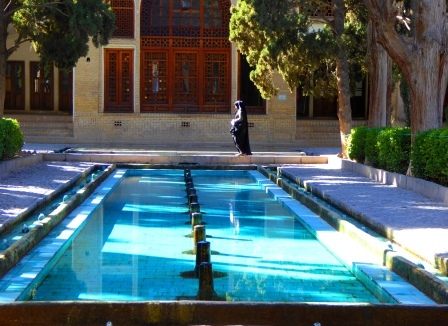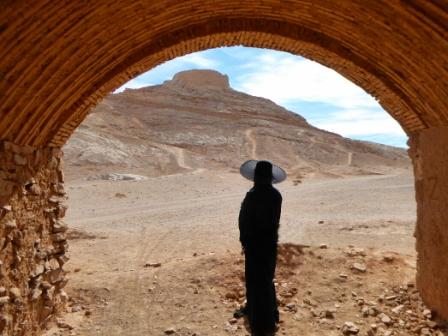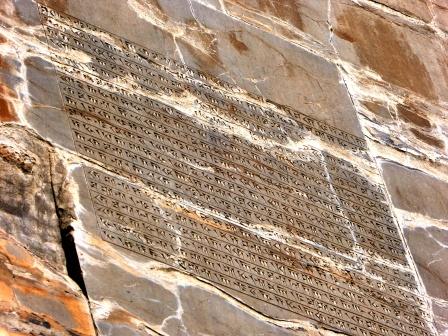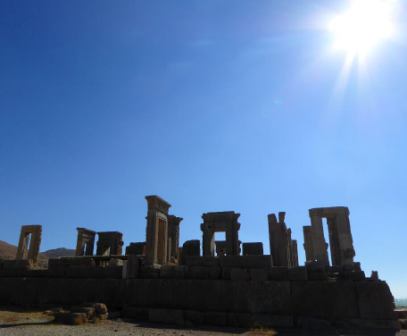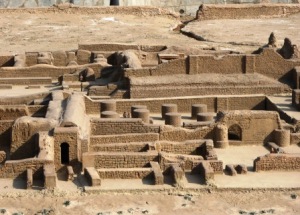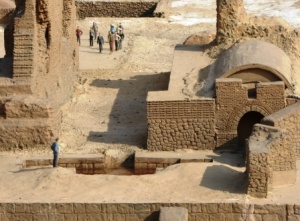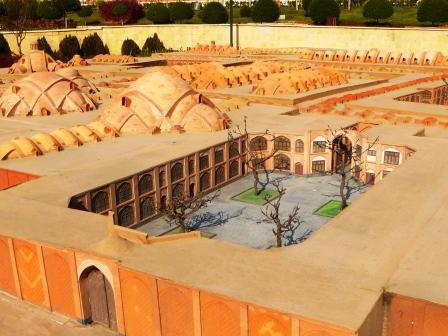The Netherlands is home to some cracking museums; the Rijkesmuseum, Rijkesmuseum van Oudheden, Allard Pierson, the museum at Castellum Hoge Woerd and many more.
But I’ve never been to the north of the country, so I had no idea what was up there. That is, until, a Twitter post by @FollowingHadrian about an exhibition of Iranian (Persian) archaeology and artefacts at the Drents Museum in Assen. As I’m always on the lookout for exciting things of an archaeological bent to do and see, and as I was actually due to be in the Netherlands (albeit much further south) over the August Bank Holiday, I immediately set about working out how I could fit in a very quick trip north to have a look.
Artefacts in the exhibition were on loan from the excellent National Museum of Iran, which I visited when I was in Tehran in 2015, so I was very keen to get another look at them. As well as artefacts that I remember seeing, there were ones that were either not on display, or which I just didn’t see or notice, so there were plenty of ‘new to me’ things to see.
The Drents Museum was purpose-built as a museum in 1854, but the exhibition was in the newer extension, opened in 2011. The exhibition space, downstairs, is quite large, although not huge, open and nicely lit and there seemed to be a good number of people visiting the exhibition, including groups, although it was not packed (this was a Monday* lunchtime, so I wouldn’t have expected it to be really packed).
The exhibition, Iran: Cradle of Civilisation, takes in a really broad sweep of Iranian/Persian history, including prehistoric artefacts dating from as early as 7000BCE right into the Islamic period, ending in about 1700CE.
Prehistoric culture is represented by some really beautiful and delicate pieces. I was particularly struck by this small stone bowl (it’s about 4-5 cm in diameter). It’s carved out of a piece of the darker-coloured stone in which there are lighter bush-coral inclusions.
This terracotta bowl is decorated with a painted frieze of dancing figures. Perhaps commemorating a particular occasion or a festival of some sort.
I was particularly fascinated by this clay ball, as it brought to mind the stone balls seen in collections in the north of Britain (have a look at the Huntarian Collection in Glasgow for some examples).
It isn’t really known what the balls found in Britain were for but the accompanying film explained this Persian ball. It’s a seal!
The ball is covered with figures of human and animals.
I stood in front of the screen filming the whole video because it really explained this artefact very well. You can see the video here: Clay Bulla (message to anyone from the Drents Museum: If you would prefer it if I took this video down, please let me know and I’ll do so).
The two objects below, although not particularly fancy looking, are evidence for the technological development of the region. The first a rather mucky-looking footed-dish, is actually a crucible in which copper was smelted.

Clay crucible 4000-3700BC, Tappeh Qabrestan, National Museum of Iran, Tehran. When copper ore is heated to a temperature above 1084c it will melt and can then be poured into moulds. At first only pure copper was melted, but the coppersmiths gradually started to mix it with other metals. One of those experiments lead to the discovery of bronze (copper and tin).
The second, a mould for casting a copper axe-head. Found at the site of Tappeh Ghabrestan, northwest of Tehran, which is known for its finds associated with copper-working, with furnaces and moulds dug into the ground as well as these smaller, terracotta moulds.
Although these not the fanciest exhibits in the exhibition, they are hard evidence of technological development and expertise in the region.
So what are the fanciest artefacts?
From the third millennium BCE, comes a gorgeous selection of carved soapstone vases, pots, cups and bowls. Soapstone is soft and relatively easy to carve, so it lends itself to these kinds of intricate, detailed designs. The imagery include real and imagined creatures, demons, deities, scroll-work and complex, interlocking geometric designs. I spent a long time admiring these wonderful artefacts and wanting so badly to be able to touch them.
From the 6th until the 3rd centuries BCE, the first Persian empire, the Achaemenids, founded by Cyrus the Great, dominated this part of the world. This dynasty, which included the other Persian ‘Greats’, Darius, and Xerxes, is notable for, among other things, its fine gold work. Examples in the exhibition also include beautiful vases and drinking horns (rhyton).
And one of the many highlights of this exhibition, this wonderfully weird pottery jug. Fashioned in the form of a man tending his bird-beaked pot-beast 😀

Pottery jug 850-550BCE, Kaluraz, National Museum of Iran, Tehran. This jug appears to have a spout in the shape of some kind of beak. Such beaked jugs were used for special wine ceremonies at burials. The Kaluraz cemetery is well known for its beautiful pottery vessels. This is the finest example – functional and yet artistic.
And there were even some reliefs from the imperial city of Persepolis.
Many reliefs at Persepolis show representatives of the 23 peoples of the empire, who came to the imperial city to pay tribute to King Darius. on the left, a gift-bearer climbing the stairs and on the right, a ma presenting a gift of arms to the King.
A whole wall of the exhibition space was transformed into a famous and spectacular monument, the original of which is situated at the World heritage Site of Behistun in north-west Iran (there are several spellings of this: Bisotun, Bistun or Bisutun).
The life-sized figure holding a bow, as a sign of kingship, is Darius the Great, beneath his foot is a figure, possibly the pretender to the throne, Gaumata. Behind him are two attendants and facing him are bound captives representing the conquered peoples. The symbol above the scene is the Faravahar the central symbol of the Zoroastrian religion.
The text, is written in three ancient languages; written in three different cuneiform script languages: Old Persian, Elamite, and Babylonian (an Akkadian dialect) and it provided the key to the decipherment of cuneiform, in much the same way the The Rosetta Stone was the key that unlocked Egyptian hieroglyphs. The inscription begins with the biography of Darius the Great, for whom the monument was created, and the history of the empire following the death of its founder Cyrus the Great. It describes the battles fought and won, and the rebellions put down by Darius and the generals subjugated.
This life-sized replica, measuring 15 x 6 metres, was created especially for this exhibition and installed at the same height as the original would be viewed. This gives a good idea of how the original in-situ would be seen, although, obviously, in a very different location.
When I was looking at visiting this exhibition, one of my burning questions was how on earth it had come about. I assumed that there must be some professional connections between curators in Assen and Tehran that had enabled the Drents Museum to secure such an amazing array of loans. Handily, the exhibition included a film answering this, and other questions, and the curatorial connections between the museum services has resulted in this exhibition and a return exhibition of Dutch art and archaeology now on display in Tehran. You can watch a mini-doc about the exhibition here: https://drentsmuseum.nl/en/exhibitions/iran
This is certainly one of my exhibitions of the year and I would love to visit again, but I doubt that I’ll be able to get to Assen again before the exhibition closes on 18th November. However, I think I’m going to have to plan a return visit to the Drents Museum in the not-too-distant future, for the next exhibition, ‘Nubia – Land of the Black Pharaohs‘ I just wish that exhibition catalogue was available in English. If it had been, I would have snapped it up.
.
*I should say that the Drents Museum, just like pretty well every other museum in the Netherlands, isn’t generally open on Mondays. I was lucky in that I was visiting at the end of the school holidays and it happened to be open on the day that I was able to get there.







































































































































